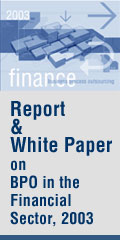|
|
Proposed Basel II amendments to impact structured finance, say Fitch
A further proposal would clarify exactly when a liquidity facility is considered a senior or non-senior exposure under the IRB approach. The proposed new language states that a liquidity facility would only be considered senior when "no cash flows from the underlying pool of assets could be transferred to other creditors until any liquidity draws were repaid in full". This could impact most liquidity facilities supporting ABCP conduits because the priority of payments typically dictates that the senior fees and expenses are paid before the liquidity facility. A non-senior liquidity facility would be subject to a higher risk-weighting.
The proposals also change the credit conversion factor (CCF) for eligible liquidity facilities under the standardised approach. Originally eligible liquidity facilities, with a term under one year, would benefit from a 20% CCF, while those over one year have a 50% CCF. Under the proposal, the CCF would be 50% for all eligible liquidity facilities, regardless of the term of the commitment. In Fitch's opinion this is not likely to have a significant impact as most liquidity facilities monitored by Fitch are not eligible. An eligible liquidity facility can only support investment grade rated securities rated
'BBB-'(BBB minus) or higher. However, most liquidity facilities are not eligible because they can support sub-investment grade securities as long as the securities are not defaulted.
Similarly the proposals would also eliminate the 0% CCF applicable to liquidity facilities that can only be drawn upon a general market disruption (under the standardised and IRB approaches). In Fitch's opinion this is likely to have a negligible impact because no ABCP conduits rated by Fitch are supported by market disruption type liquidity facilities.
The final proposal made by the Basel committee concerns the requirement for banks to conduct their own risk analysis. Banks will no longer be able to rely solely on external credit ratings and must instead also perform their own risk assessment. Failure to do so could mean a securitisation exposure being treated as unrated which would result in a full capital deduction. This could impact the entire securitisation market. However in Fitch's view, the impact on the ABCP market would be minimal because most liquidity facilities are not externally rated. Consequently most banks are aiming to use the internal assessment approach (IAA) under the IRB to size the capital charge on any conduit liquidity facilities they provide.
<<< GO BACK TO FIRST PAGE
(This is press release of Fitch Ratings)
Enhancements to the Basel II capital framework... Read here
Credit Implications of U.S. Financial Stability Plan & Stimulus Act
Principles for sound stress testing practices and supervision
External audit quality of banks need to improve, says Basel Committee
Basel Consultative paper for assessing fair valuation practices
Basel Committee announces strategy to address lessons of banking crisis
IMF Welcomes Comprehensive European Response to Financial Crisis
IMF sees heightened risks to global financial stability
CLICK FOR SPECIAL SECTION ON GLOBAL FINANCIAL CRISIS
Subprime Crisis: A Special
CLICK FOR MORE FEATURES & STORIES
|
|


|


